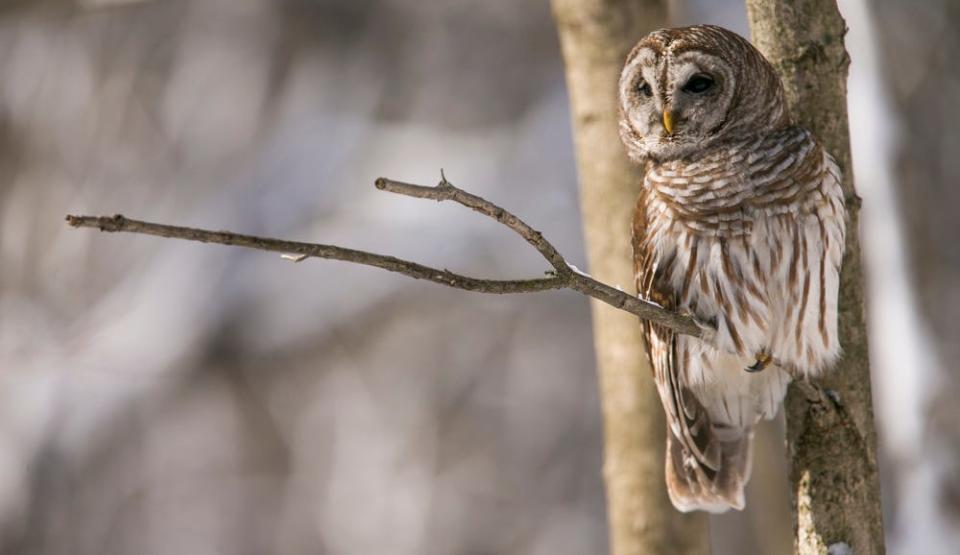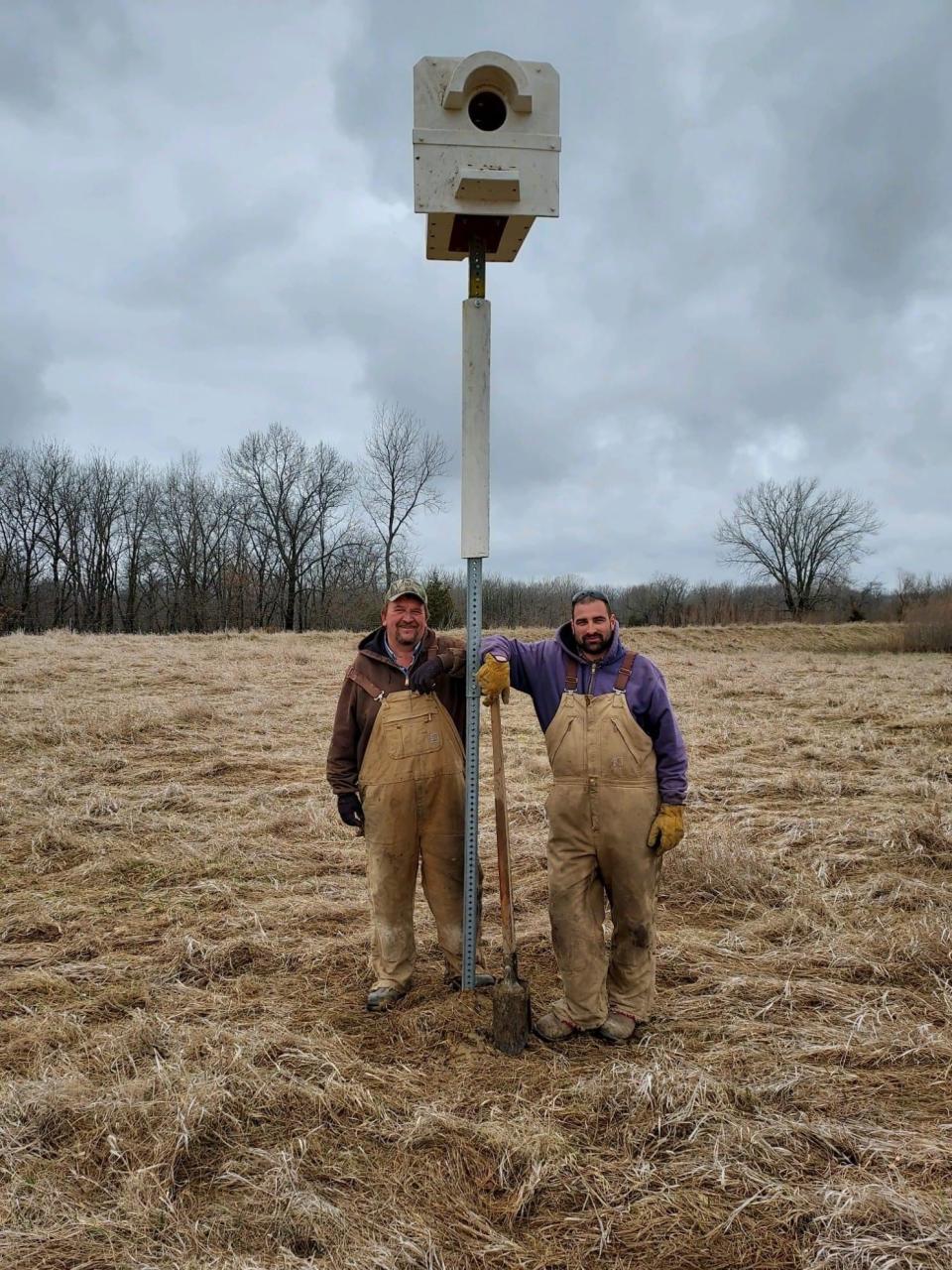Want to have owls in your yard? Here's how to build an owl box and where to put it
Who wants to see an owl? Who wants to hear an owl? Who wants to build homes for an owl? Who? Who? Who?
One of the best ways to do that is to build an owl nesting box, and it's easier than you might think.
There are several types of owl species across Indiana that would significantly benefit from nesting boxes, or man-made structures that help provide a spot for owls to roost and be protected from other animals.
While any time of year is good to put up an owl box, "winter is the optimal time," according to state ornithologist Allisyn-Marie Gillet.
"This is a great time of year since owls are looking for winter roost sites," she said. "Owls also start nesting earlier in the year than other species."
Wildlife: Some birds named after people will get new names to avoid troubling pasts of namesakes
Contrary to common perception, these boxes aren't just meant for large swaths of forested land. Even a backyard tree can help make a difference.
Here's what you need to know about putting up an owl nesting box:
What owls benefit from nesting boxes?
There are three types of owl species in Indiana in particular that benefit from nesting boxes, all of which are species that nest in cavities. First there is the barn owl, which is actually a state-endangered species. They have that quintessential heart-shaped face and prefer open spaces.
The second is the barred owl, which is one of the biggest owl species in Indiana. These owls have more streaks on their feathers and are more often found in wooded areas. The last is the Eastern screech owl, which is a much smaller bird, short and stocky.

Why are owl boxes important?
Natural cavities in trees are in high demand, Gillet said. Not only do owls use these spaces, but so do other animals such as squirrels and raccoons — which means they face competition for space to roost but also to lay their eggs.
Owls and other raptors are important parts of the ecosystem, Gillet said. Properly built and installed next boxes provide owls with a safe place to raise their young and keeps other mammals from causing harm. These boxes also are used as a winter roost to help owls survive harsh weather conditions.
How do you build a nesting box?
Nesting boxes are simple to make. In most cases you'll need only some plywood, a couple studs and a some screws. As the different types and sizes of owls suggest, you will need slightly different types of boxes.

The boxes need to be made according to the cavity requirements of the species — "Not all cavities in trees are created equal," Gillet said. Boxes for Eastern screech owls need to be much smaller than the barred owl, for example.
To find more specific details, here are the instructions for the barn owl, barred owl and Eastern screech owl nesting boxes.
Where do you put them?
Perhaps unsurprisingly, where these boxes are placed — whether in the center of a wood lot or along the edge, for example — varies by the species of owl.
For the Eastern screech owl, the boxes should be placed on a live tree or a pole anywhere between 10 to 30 feet above the ground. It's recommended the box be placed under a tree limb at the woodland edge with adjacent fields or wetlands. This could be in your yard if you have a nearby park or open area.
Scrub Hub: Do we have wild pigs in Indiana? Are they wreaking havoc like everywhere else?
The boxes for the barred owl, however, need be only 12 to 15 feet above the ground, also attached to a live tree or a post. These bird prefers to have the boxes more within a wooded area, but located within 200 feet of water, if possible.
Barn owls, as the name suggests, often prefer open habitats like agricultural fields, which is why their boxes are often located on the sides of barns. It's recommended these boxes are placed between 10 to 25 feet above the ground. The nest boxes can be placed in a variety of structures, including barns, silos, granaries, grain elevators, and church steeples, or mounted on a free-standing pole.
Call IndyStar reporter Sarah Bowman at 317-444-6129 or email at sarah.bowman@indystar.com. Follow her on Twitter and Facebook: @IndyStarSarah. Connect with IndyStar’s environmental reporters: Join The Scrub on Facebook.
IndyStar's environmental reporting project is made possible through the generous support of the nonprofit Nina Mason Pulliam Charitable Trust.
This article originally appeared on Indianapolis Star: These owl species need nesting boxes. Here's how you can help.

